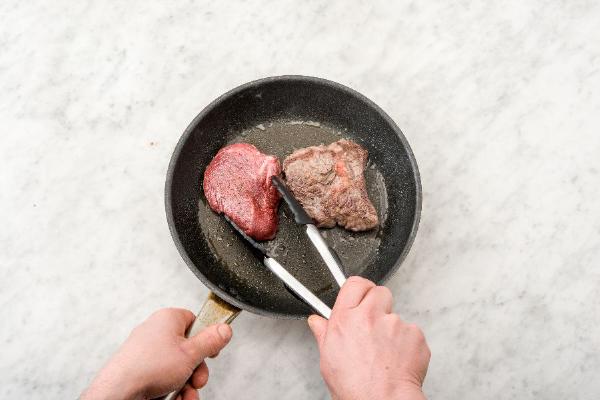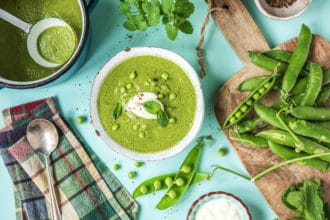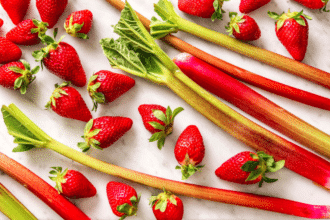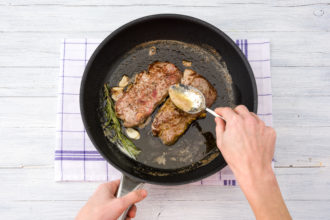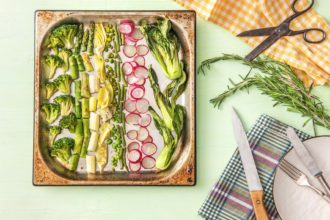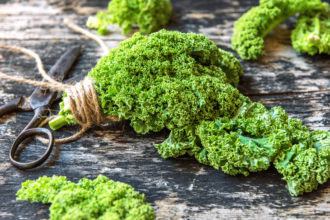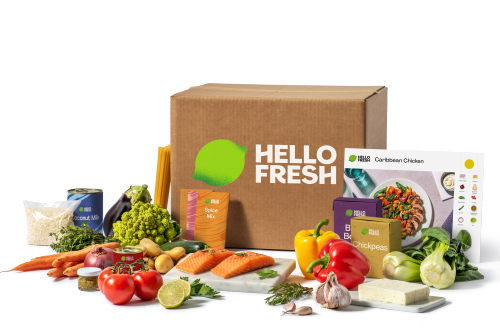On The Menu Next Week: Cumin-Spiced Steak with Scallion Dressing April 17, 2017
Argentinian chimichurri sauce takes a surprising, seasonal twist when scallions join the party. We caught up with our chefs in the test kitchen to ask them about the citrusy scallion dressing that steals the show in next week’s cumin-spiced steak recipe. Read all about it, then select the meal from next week’s menu.

Dressings are a staple for home cooks, which is why we love the citrus scallion dressing in this recipe. Tell us more about it!
Chef Nate: This is a simple twist on one of the most basic dressings, a citronette; just mix scallion greens with olive oil and lemon juice to get that citrus and onion flavor. It’s also a great base for experimenting with other herbs like parsley, cilantro, basil, chives, just about anything.
What are some ways customers can repurpose the dressing?
Chef Freida: This dressing would be great on salmon, chicken, pork, and grilled veggies. It’s very versatile and a great condiment for spring and summer.
What’s the trick to knowing when your steak is done (medium, medium-rare, medium-well, etc)?
Chef Nate: I usually judge my steak based on feel. There are some basic comparisons about what steak feels like at every stage of doneness (less firm to more firm), but if you’re unsure a meat thermometer is the safest way to judge.
Chef Freida: I agree! Once you get the hang of cooking steak, you’ll know by how it looks and feels. But if you’re unfamiliar, it’s really best to trust a meat thermometer. We like digital instant-read ones.
- Rare: 125ºF
- Medium-Rare: 130ºF
- Medium: 140ºF
- Medium-Well: 150ºF
- Well Done: 165ºF
Israeli couscous vs. standard couscous… what’s the difference?
Chef Nate: Israeli couscous feels much more like pasta than standard or French couscous. Because of the larger size, Israeli couscous lends itself a little better to being tossed into sauces and dressings whereas French couscous is better as a base for stews and other liquid-based dishes.
Chef Freida: Israeli couscous is also called pearled couscous—it’s larger and pearl-like in shape. We love the slightly chewy texture.
Why should customers be excited to cook this recipe?
Chef Freida: The smoky steak paired with vibrant, citrusy sauce is a delicious flavor combo. It reminds me of summer cookouts and warmer weather!
What are the nutritional benefits of this recipe?
Rebecca, RD: This is a veggie-packed and nutrient-dense recipe that uses citrus to boost flavor without adding a bunch of fat, sugar, or sodium. The combination of spinach, bell peppers, and lemon helps you meet 236% of your daily recommended vitamin C intake, 20% of your recommended iron intake, and 10% of your recommended calcium intake. Pairing the veggies with whole wheat couscous means you’re also getting 28% of your daily recommended fiber intake. You’re sure to walk away from this meal feeling refreshed, replenished, and re-energized.
Sarah, RD: This meal is a great example of a balanced plate. The lean cut of steak paired with veggies and whole wheat couscous really lends itself to the MyPlate model nicely. You’ve got half a plate of vegetables, a quarter of a plate of lean protein, and a quarter of a plate of carbs. All the ingredients shine on their own while also working well together.
We’re sold. Select this slam dunk of a dinner off next week’s menu and get the recipe and ingredients delivered straight to your doorstep.


